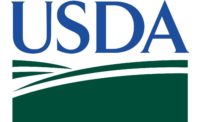Fundamental changes are transforming the beef supply chain from a just-in-time delivery model toward a just-in-case approach. Managing the costs associated with these changes may result in a shift of the historical live cattle and retail beef price ratio, according to a new RaboResearch report, “Beef Supply in a Post-Covid World.”
“While a cattle producer has little or no control over what happens in the beef supply chain post-harvest, it will be important for livestock producers to be aware of changes occurring throughout the supply chain,” writes report author, Don Close, senior animal protein analyst with Rabo AgriFinance. “Any changes, any inventory building, any additional controls and inspections could have a direct impact on the total cost of beef to the end user, which could change historical norms for live-to-wholesale and live-to-retail price spreads.”
Meat processors, distributors and retailers are striving to build supply resiliency into the beef supply chain and reduce the risk of another round of empty grocery store shelves in the future. The major drivers of change explored in the report are:
- Automation in packing plants to increase the efficiency of their labor force
- Packaging that extends shelf life, is more durable for grocery delivery, and meets sustainability expectations
- Government and investor-led sustainability demands, which may require more documentation and verification methods throughout the supply chain
- The transportation system’s technology and infrastructure overhaul that reduces carbon emissions and the risk for backlogs
The area of change with the greatest potential direct impact on cattle producers is meatpacking plants’ embedding more automation into their facilities. The report notes that the initial introduction of advanced technology will not serve as a replacement for labor. It will serve to make labor more efficient. However, the transformation toward greater automation will require a workforce with different skill sets or extensive retraining.
“The challenge of finding and retaining a ready workforce has increased labor costs to the tipping point where investments into technology, robotics and software advancements become economical,” Close adds. “Anything that de-risks packers from becoming a dam that slows the flow of market-ready cattle is a win for cattle producers.”
Source: RaboResearch



Report Abusive Comment